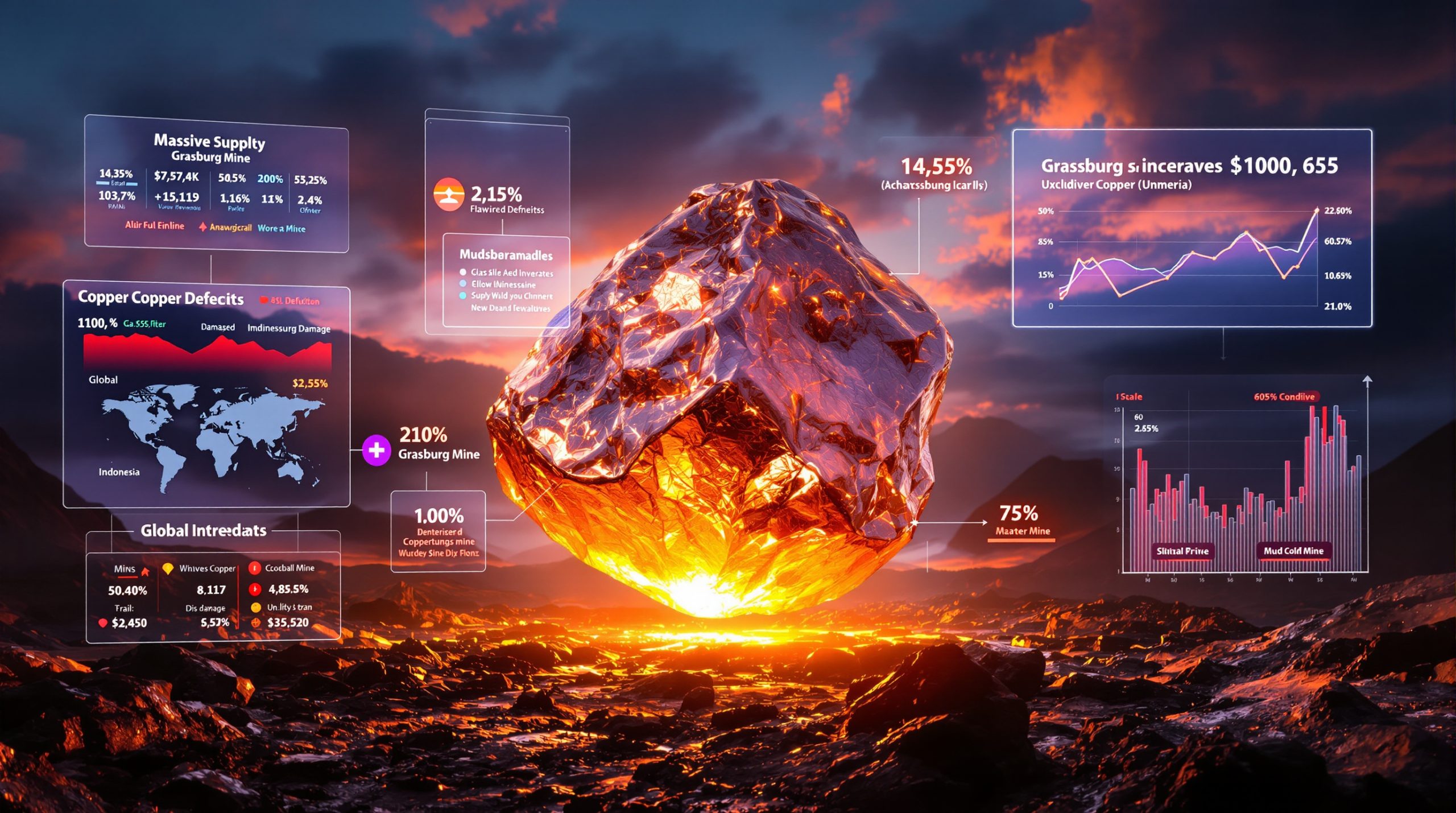What's Behind the Recent Gold Price Stability?
Gold has maintained remarkable stability above the $3,300 per ounce mark despite widespread expectations of a significant pullback. This price resilience isn't random—it signals a fundamental shift in what's driving the gold market in 2024. The precious metal's performance has confounded many analysts who predicted corrections after reaching all‐time highs analysis.
Traditional market drivers like interest rate speculation and ETF flows have taken a backseat to a much more powerful force: sovereign demand. Central banks and gold reserves worldwide have emerged as the dominant buyers supporting current price levels, creating what appears to be a new floor for gold prices.
The Shift from Traditional Market Drivers
For decades, gold prices responded predictably to factors like real interest rates, inflation expectations, and currency movements. However, the market has witnessed a paradigm shift where central bank purchasing has become the dominant price influence.
"What we're seeing today is unprecedented in modern financial history—central banks are buying gold at record pace regardless of price levels. This represents a fundamental reassessment of gold's role in the global financial system." — Ammar Al-Joundi, President and CEO of Agnico Eagle Mines
This sovereign demand has proven remarkably resilient to price increases, with central banks continuing aggressive purchases even as gold trades near all-time highs. Unlike retail investors who might be deterred by higher prices, central banks are buying with long-term strategic objectives that transcend short-term price considerations.
The Multi-Decade Performance Context
To understand why central banks are willing to buy gold at current prices, it's essential to examine the metal's long-term track record. Gold has demonstrated exceptional performance over extended timeframes, outpacing many traditional asset classes:
| Asset | Performance Since 2000 |
|---|---|
| Gold | Approximately 10x increase |
| Dow Jones | Approximately 5x increase |
| US Dollar Index | Declined against gold |
| Average Global Bond Index | Significantly underperformed gold |
This historical context explains why central banks view gold as a strategic asset worth accumulating even at record prices. They're looking at multi-decade performance rather than short-term price movements, recognizing gold's proven ability to preserve purchasing power through various economic cycles.
Why Are Central Banks Accelerating Gold Purchases?
The acceleration in central bank gold acquisitions represents one of the most significant shifts in global reserve management in decades. This trend has continued despite gold prices reaching unprecedented levels, reflecting deep-seated concerns about the global financial system.
China's Strategic Gold Accumulation
The People's Bank of China (PBoC) has emerged as one of the most persistent accumulators of gold reserves. As of June 2024, the PBoC has reported gold purchases for eight consecutive months, adding over 34 tons to its reserves since November 2023. These purchases have continued despite gold prices hovering near all-time highs.
China's actions reflect a strategic commitment to diversifying away from US dollar-denominated assets. While publicly reported figures are substantial, many analysts believe China's actual gold purchases may be significantly larger, with additional acquisition occurring through channels that don't immediately appear in official reserve statistics.
Key factors driving China's gold strategy include:
- Reducing exposure to potential US dollar devaluation
- Creating a more balanced reserve portfolio
- Preparing for possible expansion of the yuan's international role
- Building reserves that cannot be restricted by foreign powers
The Dual Concerns Driving Central Bank Demand
Central banks worldwide are reevaluating their reserves based on two critical factors that have gained prominence in recent years:
-
Value Security: Diminishing confidence in US debt and the dollar's long-term trajectory has prompted reassessment of traditional reserve holdings. With US national debt exceeding $34 trillion and growing rapidly, many monetary authorities question the long-term stability of dollar-denominated assets.
-
Guaranteed Access: The weaponization of the dollar and international financial systems has created serious concerns about accessibility of reserves during geopolitical tensions. Countries increasingly recognize that gold held within their borders remains accessible regardless of international sanctions or restrictions.
These dual concerns have transformed gold from a legacy holding to an actively managed strategic asset for central banks globally. Countries with historically low gold allocations are rapidly increasing their positions, with emerging markets leading the acceleration.
The Russia-Ukraine Lesson
The Swift system exclusion of Russia following its Ukraine invasion in February 2022 served as a watershed moment for central banks globally. Within 24 hours of the invasion, Russia lost access to approximately $300 billion in foreign exchange reserves through Swift system exclusion and asset freezes.
This unprecedented financial action demonstrated that dollar reserves could be effectively frozen through policy decisions, creating a powerful incentive for countries to diversify into physical gold, which remains accessible regardless of geopolitical circumstances.
The Russia case study highlighted several critical vulnerabilities:
- Digital reserves can be restricted almost instantly
- Foreign-held assets may become inaccessible during conflicts
- International payment systems can be weaponized
- Physical gold remains accessible even under severe sanctions
The lessons from this episode continue to reshape reserve management strategies worldwide, with central banks increasingly viewing gold as insurance against geopolitical and financial risks rather than merely as a return-generating asset.
How Significant is Central Bank Buying in the Current Market?
The scale of central bank gold purchases has reached historic proportions, creating a fundamental shift in market dynamics. This sovereign demand has established what appears to be a new price floor for gold, supporting values even amid headwinds that would typically pressure prices.
Record-Setting Official Sector Demand
Central banks have emerged as the strongest net buyers of gold in modern history. According to World Gold Council data, central banks acquired 1,136 tonnes of gold in 2023 alone—the second highest annual total on record. This trend has continued into 2024, with Q1 purchases reaching 290 tonnes, maintaining the extraordinary pace set in previous years.
This unprecedented level of sovereign purchasing provides a solid foundation for current price levels. Unlike previous gold bull markets that relied heavily on investment and jewelry demand, today's market features central banks as the dominant price-supporting force.
The scale of central bank buying becomes clear when compared to historical patterns:
- 2010-2019: Average annual central bank purchases of 383 tonnes
- 2020: 255 tonnes
- 2021: 450 tonnes
- 2022: 1,082 tonnes
- 2023: 1,136 tonnes
These figures represent a paradigm shift in the gold market structure, with central banks transitioning from net sellers (pre-2010) to unprecedented net buyers today.
Beyond Central Bank Influence
While sovereign buying has been substantial, it represents only one component of gold's current strength. The market has witnessed multiple reinforcing factors:
-
Increased retail investor participation evidenced by growing attendance at industry conferences and rising sales of physical gold products. Dealers report strong demand for coins and small bars across North America, Europe, and Asia.
-
Rising interest from generalist investors who traditionally focus on broader market sectors. Mainstream asset managers who previously avoided gold are now allocating portions of their portfolios to the precious metal as a hedge against economic uncertainty.
-
Price stabilization above $3,000 for an extended period, suggesting a new base level has been established. Gold has maintained prices above this threshold for nine consecutive months, demonstrating remarkable resilience compared to previous bull markets.
This convergence of demand from multiple market segments creates a particularly robust foundation for gold prices, distinguishing the current cycle from previous rallies that relied more heavily on single demand sources.
The Underreported Nature of Central Bank Accumulation
Many central banks are likely accumulating gold without full public disclosure, suggesting that official statistics may understate the true extent of sovereign buying. This "hidden demand" adds another layer of support to the current price structure.
Evidence for underreported purchases can be found in discrepancies between:
- Reported central bank acquisitions
- Gold flows into certain countries
- Production and consumption figures
- Changes in global trading patterns
For example, significant gold flows into China often exceed officially reported reserve increases, suggesting accumulation through sovereign wealth funds or other state-affiliated entities that doesn't immediately appear in official central bank statistics.
"The discrepancy between reported central bank purchases and physical gold flows into certain countries suggests the actual level of sovereign accumulation may be substantially higher than official figures indicate." — World Gold Council Market Intelligence Report
This opacity in reporting creates an additional bullish factor for gold, as the true extent of sovereign demand may be significantly larger than widely recognized.
How Are Gold Mining Companies Benefiting from Higher Prices?
The substantial increase in gold prices has transformed the financial prospects of well-positioned mining companies. Unlike previous cycles where higher gold prices were often offset by cost inflation, today's leading producers are demonstrating unprecedented discipline in capturing margins.
The Cash Flow Renaissance
Leading gold producers are experiencing extraordinary cash flow generation at current price levels. With gold prices up approximately $800 year-over-year in Q1 2024, well-positioned miners are capturing nearly the entire price increase as margin expansion.
Agnico Eagle Mines provides a compelling example of this dynamic. According to CEO Ammar Al-Joundi, the company has contained cost increases to just $2 per ounce in cash costs and $7 per ounce in all-in sustaining costs (AISC) despite significant inflationary pressures throughout the broader economy. This cost discipline has allowed the company to capture approximately $795 of the $800 year-over-year gold price increase as incremental margin.
The financial impact is substantial:
- Free cash flow yields for senior gold producers averaging 5.8% (Q1 2024)
- Dividend increases across the sector (most majors up 25-100% since 2020)
- Balance sheet strengthening (net debt reductions)
- Increased capital returns to shareholders
This cash flow renaissance marks a significant departure from previous gold bull markets, where producers often failed to translate higher gold prices into proportional shareholder returns.
Disciplined Capital Allocation Strategies
Unlike previous gold bull markets where companies rushed to acquire assets or develop marginal projects, today's leading producers are demonstrating unprecedented capital discipline by:
-
Maintaining cost controls: Top-tier producers have implemented rigorous cost management systems that prioritize margin preservation over volume growth. This approach represents a fundamental shift from previous cycles where cost inflation frequently eroded the benefits of higher gold prices.
-
Focusing on per-share metrics: Strategic emphasis on growing production per share rather than absolute production has become the new standard for industry leaders. This focus aligns management incentives with shareholder returns rather than simply expanding company size.
-
Balancing growth and returns: Implementing dividend increases and share buybacks alongside prudent reinvestment ensures shareholders benefit directly from higher gold prices while still supporting sustainable growth.
Agnico Eagle exemplifies this disciplined approach:
- Advancing key growth projects like Detour Lake and Meliadine using $1,800/oz gold price assumptions (despite current $3,300+ prices)
- Maintaining development schedules despite significantly higher gold prices
- Avoiding dilutive acquisitions at cycle highs
- Returning excess cash to shareholders through dividends and buybacks
This prioritization of shareholder returns and disciplined growth represents a maturation of the gold mining sector compared to previous cycles.
The Importance of Jurisdictional Strategy
Mining companies operating in politically stable regions are commanding premium valuations in today's market. The industry has recognized that geological potential must be balanced with political stability for long-term success.
This jurisdictional awareness has created a two-tier market where companies focused on tier-one jurisdictions like Canada, Australia, and select parts of Europe trade at substantial premiums to peers operating in less stable regions:
| Company Type | Typical P/NAV Valuation |
|---|---|
| North American/Australian Focused | 1.5-1.8x |
| European Focused | 1.2-1.5x |
| African/South American Focused | 0.6-0.9x |
The valuation gap between companies operating in different jurisdictions has widened significantly in recent years, reflecting increased investor emphasis on political risk factors.
Agnico Eagle's focus on Canada, Finland, and other stable jurisdictions has contributed to its premium valuation relative to peers with more geographically diverse operations. This strategy provides investors with "pure play" exposure to gold price increases without the complications of evolving regulatory regimes or political instability.
What Does the Future Hold for Gold and Gold Miners?
The outlook for gold and gold mining companies appears exceptionally favorable based on fundamental drivers and industry positioning. Multiple factors suggest the current strength in gold prices represents a structural shift rather than a cyclical peak.
Gold Price Trajectory
The fundamental factors driving gold's 25-year appreciation remain firmly in place and appear to be strengthening. Gold's unique dual role as both a growth asset and a risk mitigation tool positions it favorably in an increasingly uncertain global financial landscape.
Key factors supporting continued strength in gold prices include:
-
Persistent central bank buying: The structural shift in reserve management strategies shows no signs of reversing, with sovereign purchases likely to remain elevated.
-
Growing sovereign debt concerns: With US national debt exceeding $34 trillion and global debt levels at historic highs, gold's appeal as a non-debt-based asset continues to increase.
-
Geopolitical fragmentation: The ongoing shift toward a multipolar world creates structural support for gold as countries seek financial assets independent of any single nation's currency.
-
Institutional allocation increases: Professional money managers are gradually increasing gold allocations from historically low levels, providing a sustained source of incremental demand.
While short-term price corrections remain possible, the confluence of these factors suggests gold has established a new baseline well above historical averages, with potential for further appreciation as structural trends continue to unfold.
Industry Evolution
The gold mining sector is demonstrating greater maturity and discipline than in previous cycles. Leading producers are:
-
Generating substantial free cash flow at current gold prices, with most major producers reporting record or near-record cash generation in recent quarters.
-
Returning capital to shareholders through dividends and buybacks, with distribution rates increasing substantially across the sector. This shareholder-focused approach represents a significant evolution from previous cycles.
-
Making strategic investments in existing assets rather than pursuing overpriced acquisitions. Companies are prioritizing brownfield expansions and operational optimizations that deliver superior returns on invested capital.
This disciplined approach to capital allocation and operational management distinguishes the current cycle from previous gold bull markets, when producers often destroyed shareholder value through overpriced acquisitions and development of marginal projects.
Strategic Mineral Considerations
Beyond gold, mining companies with exposure to strategic minerals in geopolitically important regions like the Arctic are gaining additional attention. The intersection of mineral resources and national security interests is creating new opportunities for well-positioned operators.
Arctic mining economics present compelling advantages:
- Operating costs in regions like Nunavut average 18% below comparable African operations
- Regulatory stability provides long-term operational certainty
- Strategic importance to national governments ensures supportive policy frameworks
- Technological advancements have reduced historical challenges of arctic operations
Companies with established Arctic operations benefit from both operational expertise and first-mover advantages in regions of growing strategic importance. As nations increasingly focus on securing supply chains for critical minerals, these strategic positions may command additional premiums.
How Can Investors Position for the Gold Market Evolution?
The evolving gold market presents distinct opportunities for investors who understand the structural changes underway. Effective positioning requires recognizing the qualitative differences between mining companies rather than treating the sector as homogeneous.
Evaluating Producer Quality
Not all gold miners are benefiting equally from higher prices. Investors should focus on companies demonstrating:
-
Cost discipline: Ability to contain production costs despite inflationary pressures represents a crucial differentiator. Companies like Agnico Eagle that have limited cost increases to single-digit dollars per ounce are capturing significantly more value from higher gold prices than peers experiencing double-digit percentage cost inflation.
-
Jurisdictional advantages: Operations in politically stable regions with clear mining regulations reduce operational uncertainties and support higher valuations. The premium for tier-one jurisdictions has increased substantially in recent years, reflecting growing investor awareness of political risk factors.
-
Production growth per share: Strategic focus on increasing output relative to share count aligns management incentives with shareholder returns. This metric provides a more accurate picture of value creation than absolute production growth, which can mask dilutive activities.
-
Balance sheet strength: Low debt levels and financial flexibility enable companies to weather potential volatility while capitalizing on strategic opportunities. The strongest producers have eliminated net debt positions entirely, creating maximum financial flexibility.
These criteria help identify producers best positioned to translate higher gold prices into sustainable shareholder returns. Companies exhibiting all four characteristics typically command premium valuations and deliver superior long-term performance.
Understanding the Broader Gold Ecosystem
The gold market encompasses various participants beyond miners, including:
-
Central banks: Continuing to accumulate physical gold as a strategic asset with purchases remaining at or near record levels. The World Gold Council reports that central banks hold approximately 35,500 tonnes of gold reserves globally, representing roughly 20% of all gold ever mined.
-
Retail investors: Increasing participation through physical gold and ETFs, with particular strength in Asian markets. Chinese and Indian retail demand has shown remarkable resilience despite higher prices, reflecting cultural affinity for gold as a savings vehicle.
-
Generalist funds: Beginning to allocate capital to the sector after years of underinvestment. With gold mining representing less than 1% of major equity indices despite substantial appreciation, many institutional investors remain significantly underweight the sector.
This diverse ecosystem creates multiple demand sources for gold, reducing reliance on any single buyer category. The simultaneous strength across multiple segments distinguishes the current market from previous cycles that relied more heavily on individual demand sources.
Optimizing Investment Approaches
Investors seeking exposure to the gold sector have multiple options, each with distinct risk-reward characteristics. A comprehensive approach might include:
- Physical gold provides direct exposure to price movements without operational risks. Physical holdings can be complemented with
Ready to Capitalise on the Next Big Mineral Discovery?
Discover why the world's largest central banks trust gold as a strategic asset, then gain your market-leading edge by exploring Discovery Alert's dedicated discoveries page, where our proprietary Discovery IQ model provides instant notifications on significant ASX mineral discoveries. Visit https://discoveryalert.com.au/discoveries/ today to begin your 30-day free trial.




